Bay Area Rapid Transit
description: a public transportation system serving the San Francisco Bay Area
48 results

Frommer's Irreverent Guide to San Francisco
by
Matthew Richard Poole
Published 17 Mar 2006
The top family attractions besides Fisherman’s Wharf and PIER 39 (sorry) are the Exploratorium, Alcatraz (see the Getting Outside chapter), and the San Francisco Zoo & Children’s Zoo. You simply Bay Area BART Tour cannot escape these places if One of the world’s most comyour kids are even slightly perplex commuter systems, Bay Area Rapid Transit (BART) suasive. The current hot spot for links San Francisco with other kids is a place called Zeum. Its cities and communities official tag is “art and technolthroughout the East and ogy center for ages 8 to 18,” but South bays. The air-condithat title doesn’t do it justice. tioned train cars run along more than 100 miles of The events calendar features mostly elevated rail, including everything from live hip-hop one of the longest underwater concerts (free with admission) transit tubes in the world to interactive art studios where (don’t let those earthquakes teen-artists-in-residence get make you nervous).
…
Fares to either airport are usually identical, so if a flight to SFO is sold out, there may still be available seats on flights to the lesser-known OAK, which is only a few minutes from the Coliseum BART stop (four stops from San Francisco’s Financial District). Keep in mind, however, that public transportation from SFO is less expensive and far more accessible. Airpor t transpor tation to the city... Public transport is available from the San Francisco airport to downtown via BART (Bay Area Rapid Transit) (Tel 510/464-6000; www.bart.gov), which runs daily from SFO to downtown San Francisco. This route avoids traffic on the way and costs substantially less—about $6 one-way—than shuttles or taxis. Just jump on a free airport shuttle bus to the International terminal, enter the BART station in the International terminal, and you’re on your way.
…
Otherwise, try an agency that is a member of the San Francisco Convention and Visitors Bureau, such as American Childcare Service (Tel 415/285-2300; www.americanchildcare.com), which offers private inroom service at your hotel, excursions arranged for children 12 and older, and is fully licensed, bonded, and insured. BART... Bay Area Rapid Transit (BART) is essentially a com- muter railway that links neighboring communities with San Francisco. There are eight stations in the city itself, but they’re not terribly useful for getting around the city (take 223 the bus—it’s faster). Fares depend on the distance of the ride, but for a special excursion fare, you can ride the entire system as far as you want, in any direction you want, as long as you exit the system at the same station you entered.
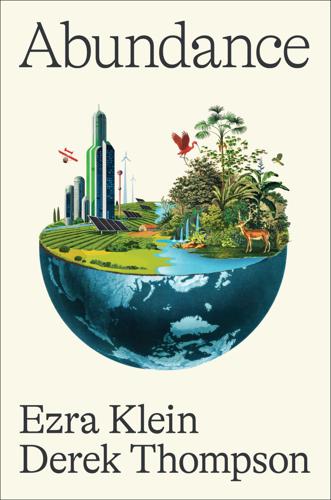
Abundance
by
Ezra Klein
and
Derek Thompson
Published 18 Mar 2025
“My philosophy when I got here was the state is the owner of this project and so we need to build state capacity. When I started, the authority was seventy percent consultants, thirty percent state. Now it’s fifty-five percent state and forty-five percent consultant.”35 In the Bay Area, a different story played out. In 2012, Bay Area Rapid Transit (BART) signed a contract with Alstom, a French rail car manufacturer, to deliver 775 cars for $2.58 billion.36 By 2023, though, something unusual had happened: the cars were coming in faster, and cheaper, than expected. The cost estimate was slashed by almost $400 million.37 One major source of savings, reported trains.com, was “BART’s decision to have its own staff do more of the engineering work in house.
…
(Stanford and MIT), 142 Armstrong, Neil, 201 Army Materiel Command (US Department of Defense), 186 Arnold, John, 182 Arnold Ventures, 182 ARPANET, 162 artificial intelligence (AI), 28, 142, 196–99 Arup, 118 Aschenbrenner, Leopold, 197 Atlantic magazine, 46, 208 AT&T, 163–65, 168 Australia, carbon emissions per person, 66 Azoulay, Pierre, 141, 148, 155, 156, 167, 168 Bagley, Nicholas, 89–91, 93–94, 112 Bastani, Aaron, 13–14 Baxter, James Phinney, III, 174, 202 Bay Area Rapid Transit (BART), 118–19 Beijing, air pollution in, 63 Bell, Alexander Graham, 171 Bell Labs (Bell Telephone Laboratories, AT&T), 163–65, 168, 177, 218 Bennet, Michael, 209 Bhattacharya, Jay, 157 Biden, Joe on COVID pandemic, 188 on economic policy, 10 on energy, 61, 212 on I-95 bridge repair, 127 on Inflation Reduction Act, 77 on infrastructure, 210–11 on scientific research, 142 on semiconductor industry, 98, 114–16 (see also CHIPS and Science Act) on trade, 210 big government–small government divide, 105–12, 205 Bill & Melinda Gates Foundation, 139, 192 BioNTech, 132, 139 Bloom, Nicholas, 142 Bloomberg, Michael, 24 Bloomberg L.P., 27, 196 BloombergNEF, 64 boardinghouses, building codes against, 41–43 Boston, housing and zoning in, 106 Breaking Through (Karikó), 155 Britain, see United Kingdom Broad Institute, 144, 154, 163 Brooks, Leah, 97 Brown, Jerry, 71, 72, 74 Buckley, Rob, 125–26 Buckley & Company, 125 building codes, housing and, 42–43; see also zoning rules building of clean economy, see energy building of housing, see housing building of infrastructure, see infrastructure burden of knowledge, 143–44 bureaucracy affluence and, 81–86 construction productivity and, 78–81 Golden Fleece Award and, 153 housing development and zoning rules, 33–38, 44–47, 106–7, 208 litigation and, 86–94, 205 of NIH, 152–59 (see also invention) Bureau of Consular Affairs (US State Department), 121–22 Bush, George H.
…
B., 69–70, 94–97, 98 Russia Biden administration on, 61 Sputnik (Soviet Union), 160–61, 199 Sabin, Paul, 87–89 Sacramento Bee, 54 safety, construction productivity measure and, 80–81 Sahin, Ugur, 139 Salzman, James, 69–70, 94–97, 98 Sanders, Bernie, 207 San Francisco Arts Commission, 103 Bay Area Rapid Transit (BART), 118–19 Board of Supervisors, 104 on 14B ordinance and contracting requirements, 103 housing in, 27–29, 106–7 Mayor’s Office on Disability, 103 San Francisco Chronicle, 56 SARS-CoV-2, see COVID pandemic Saudi Arabia, oil production by, 61, 179 scarcity as choice, 4–5 homelessness as housing scarcity problem, 38–43 (see also housing) politics of abundance vs., 207–11, 217–22 of primary-care physicians, 190–91 schizophrenia research, 135, 144–45 Schmidt, Eric, 136 Schrödinger, Erwin, 147 Schwab, Charles and Helen, 104 Schwellenbach, Lewis, 22 “Science, the Endless Frontier” (Bush), 151 Science journal, 152, 153 scientific research funding, see invention Scripps Research Translational Institute, 143 Seeger, Pete, 55 Selzer, Larry, 96 semiconductor chips CHIPS and Science Act (2022), 11, 71, 98, 114, 116, 211 manufacturing of, 26, 98, 116 Semiconductor Industry Association, 114 Sener, 118 service jobs, housing and, 30–32 Shannon, James, 152–53 Shapiro, Josh, 125–27 Shoag, Daniel, 32 Sierra Club, 54, 81, 88 Silent Spring (Carson), 50–51 silicon-based solar cell implementation, 177 silicon transistor invention, 165 Silicon Valley high-speed rail plans and, 86 semiconductor industry of, 114 (see also semiconductor chips) technology sector and housing, 27–29 Singapore federal civilian workforce size in, 117 public (social) housing in, 111 water desalination and, 67 “Situational Awareness” (Aschenbrenner), 197 Slaoui, Moncef, 186 Slovak Republic, productivity measure, 79 Smith, Stephen Jacob, 173 social (public) housing, availability of, 111–12 Social Security, 7 solar energy abundance potential for, 1–4, 14, 15 energy policy and, 62–65, 69–70 implementation of technologies for, 177–80, 181, 183 Solar Energy Research Institute, 178 South Carolina, construction productivity in, 80 South Dakota, energy sources of, 69 SpaceX, 136 Sputnik, 160–61, 199, 200 St.
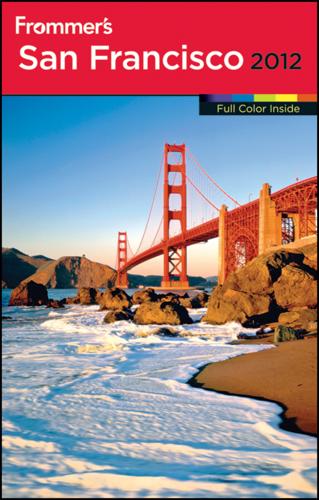
Frommer's San Francisco 2012
by
Matthew Poole
,
Erika Lenkert
and
Kristin Luna
Published 4 Oct 2011
The San Francisco Visitor Information Center, at Powell and Market streets, distributes free route maps, which are handy since a few of the Scenic Drive marker signs are missing. Try to avoid the downtown area during the weekday rush hours from 7 to 9am and 4 to 6pm. A BART Tour One of the world’s best commuter systems, Bay Area Rapid Transit (BART) runs along 104 miles of rail, linking 43 stations between San Francisco, Millbrae, and the East Bay. Under the bay, BART runs through one of the longest underwater transit tubes in the world. This link opened in September 1972, 2 years behind schedule and 6 months after the general manager resigned under fire.
…
Restaurants are organized by location and then by price range for a complete dinner (appetizer, entree, dessert, and glass of wine) as follows: Very Expensive, dinner from $75 per person; Expensive, dinner from $50 per person; Moderate, dinner from $35 per person; and Inexpensive, dinner for less than $35 per person. Essentials The Berkeley Bay Area Rapid Transit (BART) station is 2 blocks from the university. The fare from San Francisco is less than $4 one-way. Call 511 or visit www.bart.gov for trip info, or fares, or to download trip planners to your iPod, mobile phone, or PDA. If you are coming by car from San Francisco, take the Bay Bridge (go during the evening commute, and you’ll think Los Angeles traffic is a breeze).
…
U.S. airports have considerably beefed up security clearances in the years since the terrorist attacks of September 11, 2001, and clearing Customs and Immigration can take as long as 2 hours. Getting into Town from the Airport The fastest and cheapest way to get from SFO to the city is to take BART (Bay Area Rapid Transit; 415/989-2278; www.bart.gov), which offers numerous stops within downtown San Francisco. This route, which takes about 35 minutes, avoids traffic on the way and costs a heck of a lot less than taxis or shuttles. (A BART ticket is about $6 each way, depending on exactly where you’re going.)
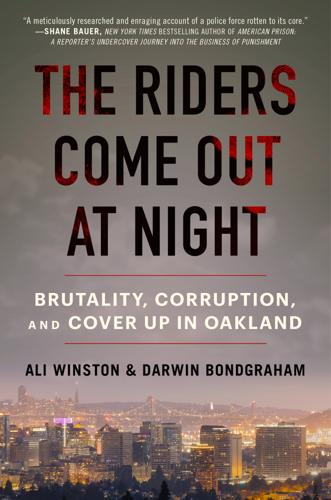
The Riders Come Out at Night: Brutality, Corruption, and Cover-Up in Oakland
by
Ali Winston
and
Darwin Bondgraham
Published 10 Jan 2023
So, Vazquez and Siapno hopped into the car with Allen and told Mabanag, Batt, and Hornung to drive the minivan and meet them at a nearby Arco gas station, where they could write the arrest report and rendezvous with their sergeant. But Vazquez and Siapno weren’t finished. Instead of heading to the gas station, they drove to a deserted dirt lot beneath the Interstate 880 bridge near the West Oakland Bay Area Rapid Transit (BART) station. The two cops had taken other prisoners there when they wanted to torture them under the cover of darkness, away from prying eyes. There were no houses or apartments nearby. There was no community staring from behind curtains or passersby whom a prisoner could beg for help.
…
Frey, according to the suspect, called him a nigger and held him down so the white clerk could rough him up.48 He was the exact type of cop the Panthers wanted to confront. Newton pulled to the curb around Seventh and Campbell, on West Oakland’s main drag, where concrete pilings for the new Bay Area Rapid Transit elevated train line were being erected opposite a nondescript row of shops and nightclubs. Frey walked up to the driver’s-side window, and when he got a clear look at the car’s occupants, he sneered, “Well, what do we have here? The great, great Huey P. Newton.” Newton handed over his license and the car’s registration, and readied himself for a legal standoff.
…
111 * * * The police department was not the only Oakland institution undergoing change in the early 1970s. The city’s growing Black population was tired of the political status quo. Sky-high unemployment rates, housing discrimination, and the razing of West Oakland’s Black-owned businesses for the new elevated Bay Area Rapid Transit tracks and Cypress Freeway all contributed to a growing urgency to fundamentally change the city’s state of affairs. And because Black people now accounted for a third of the population, community leaders realized that much more than resistance was possible. Inspiration for greater things came in 1972 when Democratic representative Shirley Chisholm of New York, who four years before became the first Black woman elected to the US Congress, ran for president.
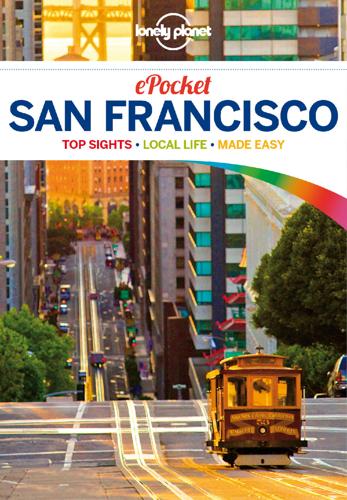
Lonely Planet Pocket San Francisco
by
Lonely Planet
and
Alison Bing
Published 31 Aug 2012
Hotel Vitale (www.hotelvitale.com) Soothing bayside spa-hotel, across from the Ferry Building. Argonaut Hotel (www.argonauthotel.com) Nautical-chic, converted 1908 wharf-side cannery, with bay views. Arriving in San Francisco Top Tip To find out how best to get to your accommodations, Click here . From San Francisco International Airport (SFO) BART (Bay Area Rapid Transit; www.bart.gov; one-way $8.10) Direct 30-minute ride to/from downtown San Francisco; SFO BART station is outside the international terminal. Door-to-door vans Share vans depart outside baggage claim; 45 minutes to most SF locations; fares $14–$17 one-way. Companies include: SuperShuttle ( 800-258-3826; www.supershuttle.com) , Quake City ( 415-255-4899; www.quakecityshuttle.com) , Lorrie’s ( 415-334-9000; www.gosfovan.com) and American Airporter Shuttle ( 415-202-0733; www.americanairporter.com) .
…
Green Tortoise Green Tortoise ( 800-867-8647, 415-956-7500; www.greentortoise.com) offers quasi-organized, slow travel on biodiesel-fueled buses with built-in berths from San Francisco to West Coast destinations including Santa Cruz, Death Valley, Big Sur and LA. Getting Around BART Best for... travel between downtown and the Mission, East Bay and SFO. Throughout this book, venues readily accessible by BART (Bay Area Rapid Transit; www.bart.gov; 4am-midnight Mon-Fri, 6am-midnight Sat, 8am-midnight Sun) are denoted by followed by the name of the nearest BART station. Destinations Downtown, Mission District, SF & Oakland airports, Berkeley & Oakland. Schedules Consult http://transit.511.org. Tickets Sold in BART station machines; fares start at $1.75.
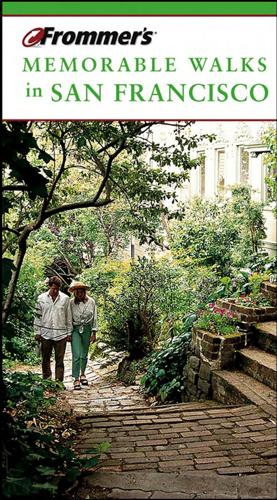
Frommer's Memorable Walks in San Francisco
by
Erika Lenkert
Published 15 Mar 2003
The L and N lines operate 24 hours, 7 days a week. Especially enjoyable to ride are the beautiful vintage multicolored F-Market streetcars, which run from downtown Market Street to the Castro and back. They offer a quick and charming way to get uptown and downtown without any hassle. BY BART BART, an acronym for Bay Area Rapid Transit (% 415/989-2278), is a futuristic-looking, high-speed rail network that connects San Francisco with the East Bay— Oakland, Richmond, Concord, and Fremont. Four stations are located along Market Street (see “By Metro Streetcar,” above). Fares range from $1.10 to $4.70, depending on how far you go, though children 4 and under ride free.
…
Index AA Bakery & Café, 30 Adams, Mark, 45 Addresses, finding, 160 Albro, Maxine, 63 Alcatraz Island, 154, 172 Alicia, Juana, 123 Alma (schooner), 150 Alta St., no. 60-62, 65–66 “American” California, original street of, 27 American Express, 165 American Zoetrope Studios, 43 Andalé Taqueria, 157 Angelou, Maya, 43 Animal Force and Machine Force (mural), 60–61 Anthony, Gene, 131 Applegarth, George, 99 Aquarium, Steinhart, 143 Area code, 165 Arnautoff, Victor, 63 Art galleries, 17, 19, 33, 43, 44, 93, 103, 111, 112, 120, 123, 153 Ashbury St., no. 710, 133 Ashbury Tobacco Center, 131 Atherton, Gertrude, 58–59, 101, 102 Atkinson, Kate, 84 Bakeries AA Bakery & Café, 30 Danilo Bakery, 49 Dianda’s, 122 Dominguez Bakery, 121 Bakery & Restaurant, 27–28 Balclutha (squarerigger), 148 Balmy Alley, 121 Banducci, Enrico, 45–46 Banking and the Law (mural), 63 174 Bank of America, 26 Bank of Canton, 27 Barbary Lane (Maupin), 90 Bars and pubs Buena Vista restaurant and bar, 150 O’Reilly’s Irish Pub, 51 The Saloon, 57 Specs’ Twelve Adler Museum Café, 48 BART (Bay Area Rapid Transit), 162–163 BART (mural), 118 Basilica of San Francisco, 126 Beach Blanket Babylon, 50–51 Beat movement, 47 Beat poets, 48, 103 Beats, 44 Belli Anne, 41–42 Ben & Jerry’s, 132 Bertrand, Ray, 63 Index • 175 Betelnut, 104 Big Four Restaurant, 75 Biordi Art Imports, 49 The Blue & Gold Fleet, 165, 172 The Booksmith, 131 Botanical Gardens, Strybing Arboretum and, 144 Boynton, Ray, 60–61 Bransten, Florine Haas, 100 Bransten House, 100 Brautigan, Richard, 58 Broadway no. 1032, 84, 86 no. 1051, 86 no. 1067, 87 no. 1078-1080 (Demarest Compound), 87–88 Brown, Arthur, Jr., 59 Brown, Willie, 130 Browser Books, 102 Buena Vista Park, 132 Buena Vista restaurant and bar, 150 Burgess, Gelett, 84, 86 Burritt Alley, 16 Buses, 161–162 Business hours, 166 Cable Car Museum and Powerhouse, 80–81 Cable cars, 70, 80–81, 161 Cabs, 163 Caen, Herb, 12–13 Café de la Presse, 17 Café NiebaumCoppola, 43 Caffe Centro, 113 Caffè Museo, 110 Caffe Trieste, 49 Caldwell, Erskine, 76 California (mural), 63 California Academy of Sciences, 143 California Agricultural Industry (mural), 63–64 California Industrial Scenes (mural), 61 California St. no. 1990, 101 no. 2026, 101 no. 2101, 102 California Street line, 161 California Welcome Center, 159 Cameron House, 30 The Cannery, 148 Canton Bazaar, 26 Carnaval (mural), 118 Carsley, Robert B., 87 Cartoon Art Museum, 108 Car travel, 163 Casa Lucas Market, 119 Cassady, Neal, 91 The Castro, 170 C.

City for Sale: The Transformation of San Francisco
by
Chester W. Hartman
and
Sarah Carnochan
Published 15 Feb 2002
Little Company, 11, 27, 72, 94, 412n24 Article XVI, Section 18, California Constitution, 129, 150, 152, 154 Arts Commission, 194, 196, 332 arts groups, 332, 333 Asian, Inc., 369 Asian Americans, 2, 17, 59, 63, 219, 221, 241, 260n, 366, 374 Asian Law Caucus, 365, 374 Asian Neighborhood Design, 365 assassinations, city hall, 234 – 37, 241 Assessment Appeals Board, 183, 184 Atlanta, 380 Audubon Society, 387 Augustino, Jim, 161 Averbush, Bernard, 377 Babbitt, Bruce, 315n Baer, Larry, 178 Bagot, Gilbert “Buck,” 278 Bakar, Gerson, 311n Baker, Dusty, 41 Baldwin, Irving, 114 Baltimore, Roslyn, 285 Bank of America, 4, 5, 6, 230, 241, 245, 293, 295, 302, 405n35 Baptist Ministers Union, 29 Bar Association of San Francisco, 101 Barbagelata, John, 134, 135, 137, 230, 231, 232, 233, 248 Bardis, John, 239, 240, 418n27, 418n28 Barnes, W.E., 39 BART. See Bay Area Rapid Transit System Bartenders Union, 34 Battery Park City, 162 Bayanihan House, 221, 223 Bay Area Citizens Action League, 418n27 Bay Area Council, 6, 11, 18, 19, 32, 390, 391, 392, 400, 405n35 Bay Area Drum Factory, 181 Bay Area Rapid Transit System (BART), 7, 30, 33, 108, 175, 181, 290, 291, 311, 330, 405n26 Bay Bridge, 293, 389 Bay View Federal Savings & Loan building, 332 Bayview–Hunters Point, 25, 63, 172, 179, 184, 233, 276, 344, 375, 462n204 BCTC.
…
The Peninsula and South Bay are areas for light manufacturing, electronics, and the aerospace industry. Alameda, Contra Costa, and San Mateo Counties support recent secondary office development. San Francisco is the center for administration, finance, consulting, and entertainment. An elaborate network of freeways and the Bay Area Rapid Transit (BART) system link all sectors of this regional economic unit to its administrative heart, the city (pace Oakland). BAC was the primary planner and lobbyist for this rail system: “BART was a BAC product,” Brown University sociologist J. Allen Whitt wrote in the pithy conclusion of his 1982 book.26 The function of the BART system is to carry suburban workers from Contra Costa, Alameda, and San Mateo Counties into the downtown center.
…
Labor’s support was rewarded immediately by appointments to influential City posts and in the long run by construction and other types of jobs for its members.31 An ILWU Local 10 official was appointed to Alioto’s cabinet. ILWU International president Harry Bridges was appointed to the San Francisco Port Commission. Hector Rueda of the Elevator Construction Workers Union was appointed to the Planning Commission. Bill Chester of ILWU was made president of the Bay Area Rapid Transit system (BART). In late 1969, the San Francisco Redevelopment Agency awarded the ILWU a choice lot in the Western Addition A-2 redevelopment area to build its world headquarters. Local 261 also received its rewards: The head of the Centro Social Obrero was appointed to the mayor’s cabinet; the local’s president went on the Housing Authority board; and a leader of MAPA was appointed by the mayor to fill a vacancy on the Board of Supervisors, another to the Board of Education.

The End of Traffic and the Future of Transport: Second Edition
by
David Levinson
and
Kevin Krizek
Published 17 Aug 2015
And why shouldn't there be more than one so that they can both compete and coordinate to better serve travelers? 238 Two mishaps stand out (1) Bay Area Rapid Transit: Fremont Flyer crash (October 2, 1972) – a train under testing with automatic control overshot the end of the track; (2) the Dockland Light Railway (March 10, 1987) test case failed to stop at the terminus.Iin one case (San Francisco's BART), drivers were re-inserted into the system, in the other (London's Dockland Light Rail), driverless trains remained standard (and safe). 239 See http://www.nycsubway.org/wiki/BART_Bay_Area_Rapid_Transit and http://www.londonreconnections.com/2013/blast-from-the-past-a-precariously-positioned-dlr-train/ for discussion of the relevant incidents 240 Firms like Megabus and Bolt serve the intercity market in a way with lower prices and WiFi that appeals to passengers more than Greyhound or Amtrak.

Human Transit: How Clearer Thinking About Public Transit Can Enrich Our Communities and Our Lives
by
Jarrett Walker
Published 22 Dec 2011
Not far off the line, easily served by shuttles, are all the major employers of Silicon Valley (including the headquarters of Google, Apple, Facebook, and Hewlett Packard), not to mention Stanford University. If you look at the amount of development that’s within walking distance of stations, the Caltrain corridor far exceeds most of the suburban areas where BART (Bay Area Rapid Transit) operates all-day frequent rapid transit. Caltrain, however, has a long history of operation with labor-intensive and therefore infrequent commuter rail. The midday service is hourly at this writing, which is useless for the spontaneous trips that true rapid transit would allow. Because Caltrain is so much less frequent than its market requires, there has to be an overlapping network of buses running along the same path.
…
Acceleration/deceleration delays, 102 Access, as outcome of transit, 13–14, 19–20 Access radii, 60, 60f Accessing, 34, 35 Adelaide, Australia, 90–91 Aesthetics, 25 Agencies, defined, 14 Airlines, connections and, 147, 165 Airport shuttles, 57, 57f, 148 Alexanderplatz (Berlin), 178 Alighting dwell, 102–103 Allocation. See Service allocation Automatic Train Control systems, 102–103 Automation, 102–103, 225–226 Averaging, 112 Barriers, chokepoints and, 50–52, 51f BART (Bay Area Rapid Transit), 79, 94–96, 95f, 139, 175 Base-first thinking, 77–79, 77f, 83–84, 223 Berlin Wall, 175 B-Line (Vancouver), 67 Boarding/alighting dwell, 102–103 Boulevard transit, 68, 205–214 Boundaries, connections and, 174–175 Box errors, 41–43 Branching, 93–96, 199–202 Branding, 90–93 Breaks, 58 Budgets, Ridership Goal and, 119, 128–129 Bus Rapid Transit, 65, 104 Businesses, comparison to, 119 Calthorpe, Peter, 193, 196 Caltrain (San Francisco peninsula), 79–80 Canberra, Australia.
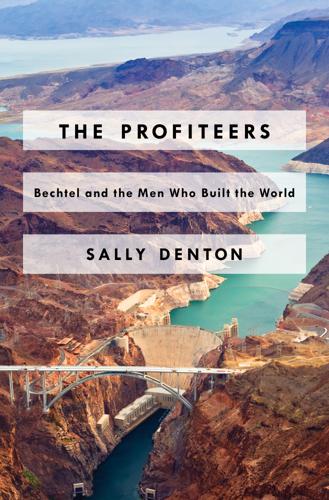
The Profiteers
by
Sally Denton
Its fifty-five thousand “employees”—most of whom are subcontractors—are divided among projects in six “markets”: civil infrastructure; communications; government services; mining and metals; oil, gas, and chemicals; and power. Its website lists dozens of “signature projects” that read like a roundup of nearly every high-profile undertaking throughout the world. The Channel Tunnel between London and Paris. The Dulles Corridor Metrorail Extension in Washington, DC. The Bay Area Rapid Transit (BART) system in California. The San Francisco–Oakland Bay Bridge. The Trans-Alaska Pipeline System (TAPS). Boston’s Central Artery/Tunnel Project known as the “Big Dig.” The construction of ninety-five airports throughout the world, including Hong Kong International, Gatwick in London, Doha in Qatar, and McCarran in Las Vegas.
…
The need for production, processing, and transportation facilities was increasing. New projects were getting bigger and more venturesome. This was also the golden age of spaceflight; anything was possible.” In Texas, Bechtel built the largest petrochemical plant in the world, and in Puerto Rico, the world’s largest chemical plant. In San Francisco, its Bay Area Rapid Transit (BART) system was the first totally new rapid transit system built in the United States in forty years. Steve Jr. extended the Middle East projects, cultivating relationships with some of the world’s more unsavory figures, including Mu’ammar al-Qaddafi of Libya, the Shah of Iran, and eventually Saddam Hussein of Iraq.
…
(Aramco), 53, 62, 63, 131 Arab League, 125, 127 Arab Spring, 5, 96 Arco, Idaho, National Reactor Testing Station, 10 Argentina, 98, 225 Armour Research Foundation, 84 Asian Development Bank, 112 Aspin, Les, 102, 161 Associated General Contractors of America, 27 Associated Press, 147, 271 Association of Southeast Asian Nations (ASEAN), 209 Athens, Greece, subway system, 208 Atlantic (magazine), 280 Atomic Energy Commission (AEC), 68, 70–71, 72, 74, 104, 105, 120, 153, 154, 156, 157 Augustine, Norman, 292 Aziz, Tariq, 169 B-1 bombers, 160 Bacevich, Andrew J., 79 Baer, Robert, 99, 113 Baker, Howard, 131 Balfour, Guthrie and Company, 56 Balkan Investigative Reporting Network, 307 Banca Nazionale del Lavoro (BNL), 197–99, 200, 201 Barcelona, Summer Olympics (1992) in, 208 Barlett, Donald L., 244 Barraza, Marian, 264–65 Baum, Dan, 233 Bay Area Rapid Transit (BART) system, California, 9, 87 Bay of Pigs invasion, Cuba, 78 Beard, Susan, 294 Becon Construction, 135, 204 Bechtel, Alice Elizabeth, 8, 23, 43–44 Bechtel, Brendan background of, 295 as Bechtel head, 9, 295–96, 304 Bechtel, Clara Alice West, 20, 21, 43, 45–46 Bechtel, Elizabeth Bentz, 19 Bechtel, Elizabeth (“Betty”) Hogan, 92, 93 Bechtel, Gary, 93, 204, 207 Bechtel, John Moyer, 19 Bechtel, Kenneth, 8, 21, 22, 45, 53, 117 Bechtel, Laura Adeline Peart, 46, 55 Bechtel, Lauren, 93, 204–05 Bechtel, Nonie, 93, 205 Bechtel, Riley P., 93 ASEAN countries and, 209–10 background of, 205 Bechtel Enterprises Holdings (BEn) and, 218–19, 221, 225, 227 as Bechtel head, 9, 192, 197, 200, 204 Bechtel’s image and, 213 Bechtel stock value decline and, 226–28 biotech company Theranos and, 305 Boston’s Big Dig project and, 207, 208, 221–22 business philosophy of, 209 Clinton administration and, 214–15 criticism of, 223–24 diversification plan of, 217, 219 employees as hostages in Iraq and, after US invasion, 202 Export Council membership of, 229 hurricane Katrina cleanup and, 246, 247 international business sought by, 208–09 Iraq projects and, 192, 197, 200 Kuwait reconstruction and, 202–03 organizational changes by, 204–05, 212–13, 217–18, 219 partnerships and, 220–21 planetary exploration and, 295 privatization and, 202–03, 216–17 son Brendan as successor to, 9, 295 success of, 211 telecom and Internet start-ups and, 221, 226 wealth of, 9, 262 Bechtel, Shana, 93, 204 Bechtel, Stephen Davison (“Steve Sr.”)
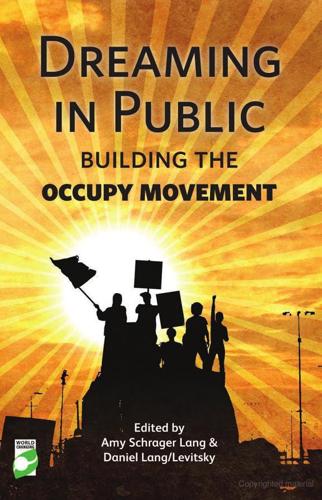
Dreaming in Public: Building the Occupy Movement
by
Amy Lang
and
Daniel Lang/levitsky
Published 11 Jun 2012
* * * At this point, then, we have to talk about Oakland itself, about what ‘Oscar Grant’ means to the people who made that name the center of their protest (or what it would mean if Occupy Oakland renamed itself ‘Decolonize and Liberate Oakland.’6) The broad and racialized social restructuring that Oakland has undergone in the last half century – an ‘urban renewal’, after the end of segregation, that has melded seamlessly into suburbanization and gentrification – is a process that has analogs in cities across the United States. But the Bay Area is also unique, and the fact that Oscar Grant was a young African American man traveling on the Bay Area Rapid Transit (BART) system – and was shot and killed by a police officer charged with policing BART – is a perfect symbol of the forms of differential inclusion through which Oakland has been formed and reformed (as this blogger describes too precisely for me to need to replicate7). After all, is Oakland really a city?
…
♦ Fondly, Michelle Ty The version printed here restores several paragraphs that were cut from the text that circulated publicly. My apologies for being unable to furnish proper citations under the pressure of time. References will gladly be provided upon request. Written with the support of 21 UC Berkeley colleagues. zunguzungu.wordpress.com/2011/11/01/the-day-before-the-day-of-action/ 1 Bay Area Rapid Transit. No Cops, No Bosses UC Davis Bicycle Barricade 20 November 2011 By now much of the world has seen video and photos of Lt John Pike of the UC Davis police department as he discharged a canister of burning chemicals into the faces of students seated in the center of the university quad.
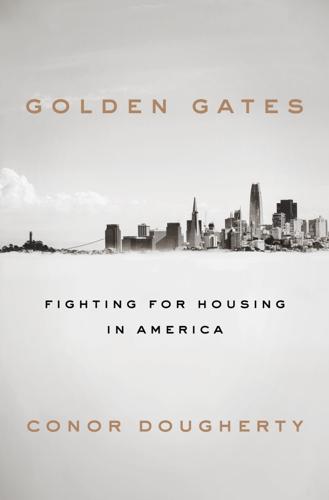
Golden Gates: Fighting for Housing in America
by
Conor Dougherty
Published 18 Feb 2020
She’d also found it shocking just how flat Bay Area cities seemed to be given how much it cost to live there. There were some skyscrapers and a few Parisian-height neighborhoods around the core of San Francisco and Oakland, but most of the rest was single-family houses, and the region’s two major commuter rail lines, Bay Area Rapid Transit (BART) and Caltrain, were surrounded by empty fields and sprawl of the sort Northern Californians supposedly scoffed at LA and Orange County for. The mythical Silicon Valley, charter of America’s future, was a land of unremarkable cul-de-sacs with unremarkable $2 million houses, surrounded by a bunch of office parks and strip malls that could be mistaken for the suburbs of Phoenix.
…
A Better Cambridge, 227 Abode Services, 165 African Americans, 191, 198, 199 civil rights legislation and, 73–74, 76, 77 displacement of, 72–73, 151 gentrification arc and, 191–92 see also racism Aguilar-Canabal, Diego, 102 AIDS, 206–7 AIDS Healthcare Foundation (AHF), 206–9, 211 Airbnb, xii, 125, 187 Alliance of Californians for Community Empowerment, 206 Andreessen, Marc, 7 apartments, 66 flipping of, 177–80, 213, 215 Apple, 25 Article 34, 88 automobile industry, 20, 21, 163 Avendaño, Ana, 49, 50 Avendaño, Rafael, 44–46, 49, 51, 52, 55–56, 58, 60, 171, 179, 182 Avent, Ryan, 24 Bain, Ian, 52 Baldwin, James, 73 barbell economy, 6 BARF, see SF BARF BART (Bay Area Rapid Transit), 7, 16, 93, 94, 100, 112, 116 Benioff, Marc, 201 Berkeley, Calif., 9 Better Boulder, 35 blacks, see African Americans Blackstone Group, 205 Blaustein, Arthur, 84 Bloomberg, 106–7 Booker, Cory, 228 Booker T. Washington Community Service Center, 122 Borgens, Janet, 52 Boston, Mass., 230 Roxbury, 229–31 YIMBYtown conference in, 227–30, 234–35 Boston People’s Plan Assembly, 230–31, 235 Boulder, Colo., YIMBYtown conference in, 35–38, 106, 210, 225 bracero program, 40–41 Brando, Marlon, 75 Breed, London, 190, 199–200, 211, 222 BRIDGE Housing, 95, 147–49, 157, 167 Brown, Edmund G.
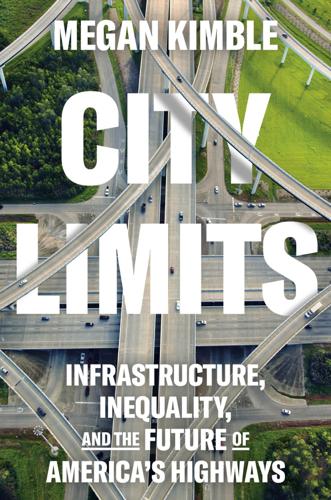
City Limits: Infrastructure, Inequality, and the Future of America's Highways
by
Megan Kimble
Published 2 Apr 2024
For example, after elected officials in San Francisco voted against the completion of the Embarcadero Freeway along the waterfront, the city lost the money that had been allocated to the project through the Highway Trust Fund; instead, it had to raise property taxes to fund a rail system for the city, which it called Bay Area Rapid Transit. John B. Anderson, a representative from Illinois and the chairman of the House Republican Conference, testified on the floor of the House in support of the amendment. “Through the rigid and unyielding insistence that this Nation must spend $5 billion a year, come rain or come shine, whether needed or not, for new highways, they may unleash a wave of popular revulsion that truly will bring the great highway machine to a halt,” he said.
…
Shannon, “The Highwaymen,” New York Times, Sept. 17, 1972. GO TO NOTE REFERENCE IN TEXT “This bill would correct”: Congressional Record, U.S. Senate Committee on Public Works, Jan. 18, 1973, 88–92. GO TO NOTE REFERENCE IN TEXT raise property taxes: “A History of BART: The Concept Is Born,” Bay Area Rapid Transit, www.bart.gov/about/history. GO TO NOTE REFERENCE IN TEXT John B. Anderson: Congressional Record, House, Oct. 2, 1972, 33427 (p. 71). GO TO NOTE REFERENCE IN TEXT “there was an element of desperation”: Smerk, Federal Role in Urban Mass Transportation, 117.

Snowden's Box: Trust in the Age of Surveillance
by
Jessica Bruder
and
Dale Maharidge
Published 29 Mar 2020
While the United States largely lags behind, the ACLU has pushed for greater oversight of domestic spying in America. In 2016, it launched an initiative called Community Control Over Police Surveillance, with the goal of helping citizens lobby for local legislation regulating law enforcement’s ability to eavesdrop. A dozen jurisdictions, from the city of Seattle to the Bay Area Rapid Transit system, have adopted CCOPS laws. Some thirty other cities have movements to push for these controls. The state that gave us Silicon Valley is also leading the way to regulate what the tech bros wrought. California passed a law, due to take effect this year, allowing consumers to force companies to delete — and not sell — their personal data.

Hacker, Hoaxer, Whistleblower, Spy: The Story of Anonymous
by
Gabriella Coleman
Published 4 Nov 2014
A single Anonymous operation might integrate all three modes—legal, illegal, and legally gray tactics—and if there is an opportunity to infuse an operation with the lulz as well, someone will. A prime example is Operation BART from August 2011. Anonymous was spurred into action when San Francisco BART (Bay Area Rapid Transit) officials sought to disable mobile phone reception on station platforms to thwart a planned anti–police brutality march. Local activists had called for the demonstration to protest the fatal shooting of Charles Hill, an unarmed passenger. Incensed by transportation authorities’ meddling in democratic expression, Anonymous helped organize a series of street demonstrations soon after.
…
After a string of days and nights at the hacker festival and an early morning flight from Germany, I arrived back in the US more exhausted than before I had left. The Anonymous spirit, by contrast, seemed to have been refreshed: making my way through baggage claim, I glimpsed a familiar image on a faraway TV screen—the Guy Fawkes mask. Jolted, I trotted over to the monitor. CNN was showing a tweet calling for “OpBART” (“BART” stands for Bay Area Rapid Transit). From the visual clues provided by CNN, I realized that this operation was not only big. It also seemed to fit the mold of the old-school, tumultuous, large-scale-uprising style of the pre-AntiSec Anonymous of yore. The 80 percent of users the GCHQ had supposedly blasted away with its DDoS were back, along with hundreds of newcomers.

Northern California Travel Guide
by
Lonely Planet
East Bay Berkeley and Oakland are what most San Franciscans think of as the East Bay, though the area includes numerous other suburbs that swoop up from the bayside flats into exclusive enclaves in the hills. Many residents of the ‘West Bay’ would like to think they needn’t ever cross the Bay Bridge or take a Bay Area Rapid Transit (BART) train through an underwater tunnel. But a wealth of museums and historical sites, a world-famous university, excellent restaurants and bars, a creative arts scene, offbeat shopping, woodsy parks and better weather are just some of the attractions that lure travelers from San Francisco over to the sunny side of the Bay.
…
Tourist Information Visit Oakland Visitor CenterTOURIST INFORMATION ( GOOGLE MAP ; %510-839-9000; www.visitoakland.com; 481 Water St; h9am-5pm Mon-Fri, 10am-4pm Sat & Sun) At Jack London Sq. 8Getting There & Away Air Oakland International Airport is less crowded and sometimes cheaper to fly into than San Francisco International Airport (SFO) across the bay. OAK airport is connected to Oakland, Berkeley and San Francisco by frequent BART trains. BART Within the Bay Area, the most convenient way to get to Oakland and back is by BART (Bay Area Rapid Transit; www.bart.gov). Trains run on a set schedule approximately every 10 to 20 minutes from around 4:30am to midnight on weekdays, 6am to midnight on Saturday and 8am to midnight on Sunday. Downtown BART stations are on Broadway at 12th and 19th Sts; other Oakland stations are on the south side of Lake Merritt, close to Chinatown; near Temescal (MacArthur station) and in Rockridge.
…
Connects with Sonoma County Transit buses. Greyhound (%800-231-2222; www.greyhound.com) Buses run from San Francisco to Santa Rosa ($21 to $38). Napa Valley Vine Operates local bus 10 daily from downtown Napa to Calistoga ($1.60); express bus 29 Monday to Friday from the Vallejo Ferry Terminal ($3.25) and El Cerrito del Norte Bay Area Rapid Transit (BART) station via Napa to Calistoga ($5.50); and local bus 11 daily from the Vallejo Ferry Terminal to downtown Napa ($1.60). Sonoma County Airport Express (%800-327-2024, 707-837-8700; www.airportexpressinc.com) Shuttles ($34) between Sonoma County Airport (Santa Rosa) and San Francisco and Oakland airports.

Smart Cities: Big Data, Civic Hackers, and the Quest for a New Utopia
by
Anthony M. Townsend
Published 29 Sep 2013
In 2007 a Washington Metro rail car caught fire after a power surge went unnoticed by buggy software designed to detect it.6 Temporarily downgrading back to the older, more reliable code took just twenty minutes per car while engineers methodically began testing and debugging. But some bugs in city-scale systems will ripple across networks with potentially catastrophic consequences. A year before the DC Metro fire, a bug in the control software of San Francisco’s Bay Area Rapid Transit (BART) system forced a systemwide shutdown not just once, but three times over a seventy-two-hour period. More disconcerting is the fact that initial attempts to fix the faulty code actually made things worse. As an official investigation later found, “BART staff began immediately working to configure a backup system that would enable a faster recovery from any future software failure.”
…
Johnston, 1890), 84. 4http://www.history.navy.mil/photos/images/h96000/h96566k.jpg. 5Kathleen Broome Williams, Grace Hopper: Admiral of the Cyber Sea (Annapolis, MD: Naval Institute Press, 2004), 54. 6“Surge Caused Fire in Rail Car,” Washington Times, last modified April 12, 2007, http://www.washingtontimes.com/news/2007/apr/12/20070412-104206-9871r/. 7“About recent service interruptions, what we’re doing to prevent similar problems in the future,” Bay Area Rapid Transit District, last modified April 5, 2006, http://www.bart.gov/news/articles/2006/news20060405.aspx. 8“The Economic Impact of Interrupted Service,” 2010 U.S. Transportation Construction Industry Profile (Washington, DC: American Road & Transportation Builders Association, 2010), http://www.artba.org/Economics/Econ-Breakouts/04_EconomicImpactInterruptedService.pdf. 9Quentin Hardy, “Internet Experts Warn of Risks in Ultrafast Networks,” New York Times, November 13, 2011, B3. 10Ellen Ullman, “Op-Ed: Errant Code?

Super Pumped: The Battle for Uber
by
Mike Isaac
Published 2 Sep 2019
He could always bike across the city, though a six-speed didn’t work so well climbing up steep hills like those on Divisadero Street. And a bike wasn’t going to help him get home from a bar at two o’clock in the morning—at least, not without a DUI or a head injury. There was always BART—Bay Area Rapid Transit—San Francisco’s wheezing commuter rail system. But BART was gross, a patchwork of dirty cloth seats and crowded cars, nowhere near large enough for the influx of twentysomethings who had invaded the Bay Area in recent years. And BART didn’t run past midnight. Not ideal for a young man pursuing the nightlife.
…
See also specific countries AT&T, 59, 92 Atwood, Renee, 135 August Capital, 31 Austin, Texas, 115, 116 Axis Theater, 10–15 Babbage, 39 Baker, Ed, 137, 174, 254 Baldwin, Alec, 90 Bangalore, India, 148 Bannon, Steve, 207 Bar Crudo, 78 Barrett, David, 49 BART (Bay Area Rapid Transit), 41 Bass, Robert, 277 the Battery, 4 BD, Akshay, 148 Beijing, China, 142 Benchmark Capital, 14, 40, 65, 70, 78–80, 282–86, 311–17, 320, 323, 324–26, 335 attempts to find Kalanick’s replacement and, 314–16 Grand Bargain and, 326–27 plan to force Kalanick’s hand, 289–91, 292–306 Benioff, Marc, 201 Benton, Dan, 67 Best Buy, 39 Beyoncé, 7–8 Bezos, Jeff, 11, 13, 35, 54, 69, 140, 231n, 332 Biewald, Lukas, 49 Big Tech, 201 Bigwords.com, 26 BlackBerry, 36 “Black Gold,” 139 Bloomberg Businessweek, 121 Bloomberg News, 237, 254, 256 Blue Bottle, 98 Bob, 241, 242, 243, 244, 246 Bonderman, David, 101, 202, 255, 270, 272, 274, 276–84, 296, 321 Booker, Cory, 179 Brazil, 174 Brin, Sergey, 34, 54, 76–77, 96, 100, 121, 140, 176, 177, 178, 179, 180 Brown, Mike, 150n Buffett, Warren, 76–77 Burkle, Ron, 23 Burner, 146 Burning Man, 42 Burns, Ursula, 327 Bush, George W., 229 Bush, Sophia, 193 Bush administration, 33 BuzzFeed, 127n, 128–31, 129n, 156 BuzzFeed News, 128–31 Cabulous, 78 Caldbeck, Justin, 285 California, 168.
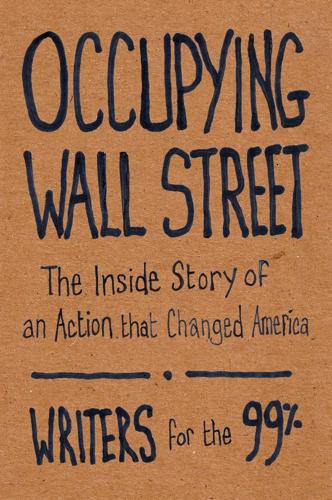
Occupying Wall Street: The Inside Story of an Action That Changed America
by
Writers For The 99%
Published 17 Dec 2011
Louis demonstrators hewed to a tried-and-true method of making their voices heard, forging alliances with trade unions to stage at least two strike actions and a walkout. With its long history of radical organizing and social protest, Oakland quickly emerged as the Occupy movement’s West Coast epicenter. Naming its original encampment Oscar Grant Plaza— after a young Oakland man who had been fatally shot in the back by Bay Area Rapid Transit (BART) police officer Johannes Mehserle on New Years Day 2009—Occupy Oakland cast the local movement in direct opposition to the city’s long history of police violence and repression. Local officials responded in ways that unwittingly reinforced the Occupiers’ claims of endemic police brutality in the city.
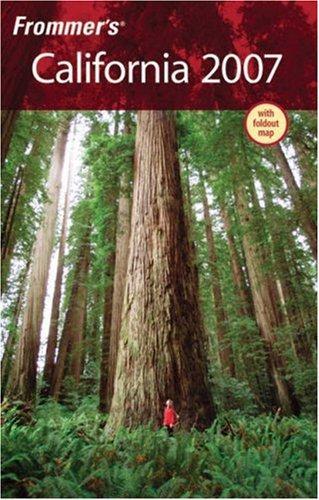
Frommer's California 2007
by
Harry Basch
,
Mark Hiss
,
Erika Lenkert
and
Matthew Richard Poole
Published 6 Dec 2006
SuperShuttle (& 415/ 558-8500; www.supershuttle.com) will take you anywhere in town; it’s $15 to a residence or business, $8 to $15 for each additional person, depending on your destination, O R I E N TA T I O N 67 and $65 to charter a van for as many as seven people. The shuttle requires pickup 2 hours before your flight (3 hr. during holidays). For budget travelers, BART (Bay Area Rapid Transit; & 415/989-2278; www. bart.gov) runs from the airport to downtown. Rates are about $5 per person, depending on where you’re bound, and the trip takes less than half an hour. The San Mateo County Transit system, SamTrans (& 800/660-4287 in Northern California, or 650/508-6200; www.samtrans.com), runs two buses between the airport and Transbay Terminal (First and Mission sts.).
…
Bayporter Express (& 877/467-1800 or 415/467-1800; www.bayporter.com) shuttle service is $26 for the first person, $12 for each additional person, to downtown San Francisco; it costs more to the city’s outlying neighborhoods. Children under 12 ride for $7. The cheapest way downtown (and the easiest during traffic snarls) is the shuttle from the airport to BART (Bay Area Rapid Transit; & 510/464-6000; www.bart.gov). The AirBART shuttle bus runs about every 15 minutes Monday through Saturday from 6am to 11:30pm, and Sunday from 8:30am to 11:30pm. It makes pickups in front of terminals 1 and 2 near the ground transportation signs. Passengers must purchase tickets before boarding, from airport vending machines.
…
The most recent streetcar additions are not newcomers at all, but refurbished classics from the 1930s. The beautiful, multicolored cars on the F Market line run along the Embarcadero from Fisherman’s Wharf to Market Street, and then to the Castro and back. They’re a quick and charming way to get uptown and downtown without any hassle. BY BART BART—an acronym for Bay Area Rapid Transit (& 415/989-2278; www.bart.gov)—is a high-speed rail network that connects San Francisco and the airport with the East Bay towns of Oakland, Richmond, Concord, and Fremont. Four stations are located along Market Street (see “By Streetcar,” above). Fares range from $1.45 to $7.45, depending on how far you go.

San Francisco
by
Lonely Planet
Flights, tours and rail tickets can be booked online at lonelyplanet.com/bookings. Air San Francisco International Airport One of the busiest airports in the country, San Francisco International Airport (SFO; www.flysfo.com) is 14 miles south of downtown off Hwy 101 and accessible by BART. Getting to/from San Francisco International Airport BART (Bay Area Rapid Transit; www.bart.gov; one-way $8) Offers a fast, direct 30-minute ride to/from downtown San Francisco. The SFO BART station is connected to the International Terminal; tickets can be purchased from machines inside the station entrance. BusSamTrans (www.samtrans.com; one-way $5) Express bus KX takes about 30 minutes to reach Temporary Transbay Terminal in the South of Market (SoMa) area.
…
On the return trip it takes Washington St instead of Jackson St. Powell-Hyde Follows the same route as the Powell-Mason line until Jackson St, where it turns down Hyde St to terminate at Aquatic Park; coming back it takes Washington St. BART Throughout this book, venues readily accessible by BART (Bay Area Rapid Transit; www.bart.gov; 4am-midnight Mon-Fri, 6am-midnight Sat, 8am-midnight Sun) are denoted by followed by the name of the nearest BART. The fastest link between Downtown and the Mission District also offers transit to SF airport, Oakland ($3.20) and Berkeley ($3.75). Four of the system’s five lines pass through SF before terminating at Daly City or SFO.

The Great Railroad Revolution
by
Christian Wolmar
Published 9 Jun 2014
This type of initiative was replicated across the country, and as George Douglas, writing in 1992, suggested, “with this infusion of public aid, suburban train service in the major cities where it once flourished— New York, Boston, Chicago and Philadelphia—is probably a good deal better than it was thirty years ago.”11 Investment has continued in suburban rail, and several unlikely cities such as Dallas and Albuquerque have modest rail systems; many more are under construction in a host of major cities, often reusing long-abandoned lines. The opening of the BART (Bay Area Rapid Transit) system in the San Francisco area in 1972 marked a renewal of interest in metro lines in the United States. Although it has been riven with funding problems and technical difficulties, it has built up into a system with more than one hundred route miles and nearly four hundred thousand daily users.
…
Index Accidents, 190–200, 194–196, 226, 227, 318, 351, 354 and bridges, 161, 193–194, 256 Frankford Junction accident, 323–324 and livestock, 42, 81–82, 196 Picnic Train disaster, 195–196 and Vanderbilt, and Camden & Amboy Railroad, 80–81, 240 See also Derailments Acela Express, 351 Adams, Alvin, 82–83 Adams, John Quincy, 81 Adirondack Express, 263 Adirondacks, 224 Adler, Dorothy, 124 Alaska Railroad, 307 Albany & Schenectady Railroad, 67 Albany & Susquehanna Railroad, 247–248 Alcohol, 143, 206 Aldrich, Mark, 191, 195 Allen, Geoffrey Freeman, 188, 190, 314–315, 328 Allen, Horatio, 17–18, 20 Allen, William Frederick, 219 Ambrose, Stephen E., 143 Ambulance and hospital trains, 115 American Railroad Journal, 60, 89, 121, 154, 191 American Railway Union, 235–236, 246 Ames, Oakes, 137, 157 Amtrak, 261, 334, 341–345, 350–352, 356–357, 358 Andrews Raid, xxii Androscoggin & Kennebec Railroad, 61 Annapolis & Elk Ridge Railroad, 98 Anthracite, 17, 268–269, 334 Antietam, Battle of, 106 Arlington National Cemetery, 98–99 Armored trains, 116 Army engineers, 33 Ashe, William A., 103 Atchison, Topeka & Santa Fe Railroad (Santa Fe), 135, 141, 176, 235, 270 and aviation, 302–303 branch line closures, 316 diesel services, 316 gas-engine trials, 310 and Harvey restaurants, 209 and immigrants, 172, 173 prestige services, 301, 313, 328 and Western expansion, 173–174, 175–176, 179 Atlantic & Great Western Railroad, 168 Atlantic & North Carolina Railroad, 40 Auburn & Syracuse Railroad, 67 Australia, 60, 176 Austria, 21 Averell, Mary, 248 Aviation, 302–303, 318, 321, 328–329, 337, 350, 352 Ayres, Henry “Poppy,” 79–80 Baedeker guides, 184, 223 Baldwin, Matthias, 42–43 Ballast, 46 Baltimore & Ohio Railroad, 12, 58, 60, 68–69, 70–71, 168, 230, 250, 303–304, 308 branch line closures, 316 and Civil War, 95, 97–98, 104, 111, 113, 118 electrification, 286–287, 297 and first US railways, 1, 18–23, 32, 33, 125 labor relations, 233, 238 prestige services, 264–265, 327–328 Baltimore Riot, 97–98 Barnard, George C., 242 Baseball, 226–227 Bass, Sam, 202 Bay Area Rapid Transit, 353–354 Beauregard, P. G. T., 101 Bell, Nimrod, 161–162 Belt Railway, 71 Benton, Thomas Hart, 7 Best Friend of Charleston, 20 Bevan, David, 337 “Big John” case, 346–347 Black Diamond, 334 Blenkinsop, John, 15 Blücher, 15 Boiler explosions, 192 Bolshevik Revolution, 294 Boston commuter services, 211 rail connections, 52–53 South Station, 261, 344 Boston & Albany Railroad, 203 Boston & Lowell Railroad, 34, 47, 52, 73, 77, 193 Boston & Maine Railroad, 223, 287, 297, 338 Boston & Providence Railroad, 84 Boston & Worcester Railroad, 35 Boulton & Watt, 5–6 Boy Scouts, 311 Bragg, Braxton, 112 Braking, 49, 196–199 Branch lines, 210, 307, 316, 327, 333–334 Brassey, Thomas, 39 Bridges accidents, 161, 193–194, 256 and beavers, 210 Dale Creek bridge, 147 destruction of, 106, 109, 110, 112 Missouri bridge, 155, 207 Rock Island bridge, 86, 147 Bridgewater Canal, 8 Brighton Beach & Brooklyn Railroad, 223 British Railways, 334, 348 Broadway Limited, 266–267, 309 Brown, Dee, 42, 127, 135–136, 139–140, 146, 149, 152, 172, 206, 208 Brown, George, 18 Brown, John, 94–95 Brown, Joseph E., 103 Brunel, Isambard Kingdom, 59 Bryant, Keith L., Jr., 158, 178, 251 Buchan, John, 109 Budd, Ralph, 310–312, 328 Buffalo, Bradford & Pittsburgh Railroad, 242 Buffalo & Rochester Railroad, 67 Buffalo & State Line Railroad, 60–61 Buffett, Warren, 357 Bull Run, Battle of, 101–102, 112 Burkhardt, Ed, xxviii, 354–355 Burlington Northern Santa Fe Railroad, 257, 258 Burlington Railroad.

San Francisco
by
Lonely Planet
Flights, tours and rail tickets can be booked online at lonelyplanet.com/bookings. Air San Francisco International Airport One of the busiest airports in the country, San Francisco International Airport (SFO; www.flysfo.com) is 14 miles south of downtown off Hwy 101 and accessible by BART. Getting to/from San Francisco International Airport BART (Bay Area Rapid Transit; www.bart.gov; one-way $8) Offers a fast, direct 30-minute ride to/from downtown San Francisco. The SFO BART station is connected to the International Terminal; tickets can be purchased from machines inside the station entrance. BusSamTrans (www.samtrans.com; one-way $5) Express bus KX takes about 30 minutes to reach Temporary Transbay Terminal in the South of Market (SoMa) area.
…
On the return trip it takes Washington St instead of Jackson St. Powell-Hyde Follows the same route as the Powell-Mason line until Jackson St, where it turns down Hyde St to terminate at Aquatic Park; coming back it takes Washington St. BART Throughout this book, venues readily accessible by BART (Bay Area Rapid Transit; www.bart.gov; 4am-midnight Mon-Fri, 6am-midnight Sat, 8am-midnight Sun) are denoted by followed by the name of the nearest BART. The fastest link between Downtown and the Mission District also offers transit to SF airport, Oakland ($3.20) and Berkeley ($3.75). Four of the system’s five lines pass through SF before terminating at Daly City or SFO.
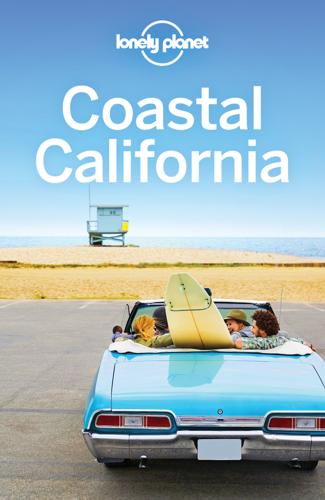
Coastal California Travel Guide
by
Lonely Planet
East Bay Berkeley and Oakland are what most San Franciscans think of as the East Bay, though the area includes numerous other suburbs that swoop up from the bayside flats into exclusive enclaves in the hills. Many residents of the ‘West Bay’ would like to think they needn’t ever cross the Bay Bridge or take a Bay Area Rapid Transit (BART) train through an underwater tunnel. But a wealth of museums and historical sites, a world-famous university, excellent restaurants and bars, a creative arts scene, offbeat shopping, woodsy parks and better weather are just some of the attractions that lure travelers from San Francisco over to the sunny side of the Bay.
…
Tourist Information Visit Oakland Visitor CenterTOURIST INFORMATION ( GOOGLE MAP ; %510-839-9000; www.visitoakland.com; 481 Water St; h9am-5pm Mon-Fri, 10am-4pm Sat & Sun) At Jack London Sq. 8Getting There & Away Air Oakland International Airport is less crowded and sometimes cheaper to fly into than San Francisco International Airport (SFO) across the bay. OAK airport is connected to Oakland, Berkeley and San Francisco by frequent BART trains. BART Within the Bay Area, the most convenient way to get to Oakland and back is by BART (Bay Area Rapid Transit; www.bart.gov). Trains run on a set schedule approximately every 10 to 20 minutes from around 4:30am to midnight on weekdays, 6am to midnight on Saturday and 8am to midnight on Sunday. Downtown BART stations are on Broadway at 12th and 19th Sts; other Oakland stations are on the south side of Lake Merritt, close to Chinatown; near Temescal (MacArthur station) and in Rockridge.
…
Connects with Sonoma County Transit buses. Greyhound (%800-231-2222; www.greyhound.com) Buses run from San Francisco to Santa Rosa ($21 to $38). Napa Valley Vine Operates local bus 10 daily from downtown Napa to Calistoga ($1.60); express bus 29 Monday to Friday from the Vallejo Ferry Terminal ($3.25) and El Cerrito del Norte Bay Area Rapid Transit (BART) station via Napa to Calistoga ($5.50); and local bus 11 daily from the Vallejo Ferry Terminal to downtown Napa ($1.60). Sonoma County Airport Express (%800-327-2024, 707-837-8700; www.airportexpressinc.com) Shuttles ($34) between Sonoma County Airport (Santa Rosa) and San Francisco and Oakland airports.
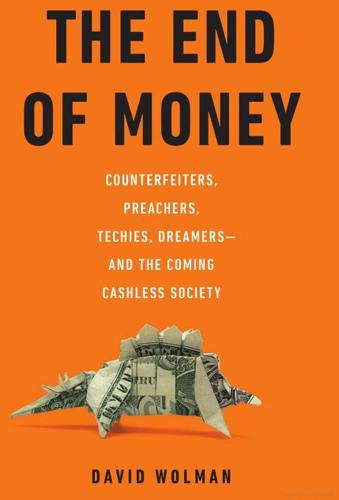
The End of Money: Counterfeiters, Preachers, Techies, Dreamers--And the Coming Cashless Society
by
David Wolman
Published 14 Feb 2012
His background is in computers, where he got his start helping to link up networks in the days before the Internet. His specialty was making networks secure, which led to a corporate job traveling the world to help with secure systems at NATO, satellite communications in Southeast Asia, and reliable data communications for California’s Bay Area Rapid Transit. He was one of the founders of a consultancy in the 1980s. Secure computer networks and financial transactions have many points in common, and Birch began to build a reputation as an expert in payment technologies and electronic money systems, with clients including the likes of VISA, American Express, MasterCard, Barclay’s, and the European Commission.
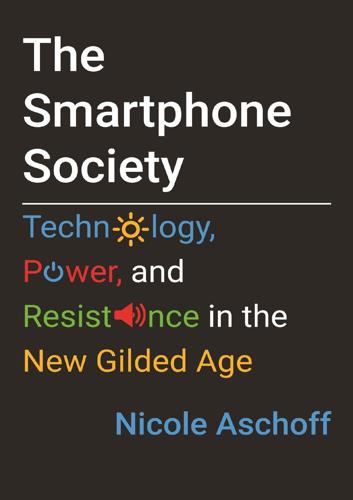
The Smartphone Society
by
Nicole Aschoff
Smartphones both reflect these deep divides and reconfigure them in novel ways. A Tool for Justice James was deeply shaken by his run-in with the police, breaking down in tears once he reached home. The situation could have turned deadly in an instant. In Oakland, Oscar Grant III was pinned down on a Bay Area Rapid Transit train platform and shot in the back by a BART police officer after a fight had broken out on the train.2 In Chicago, seventeen-year-old Laquan McDonald was shot in the back walking away from a policeman.3 Police shot and killed fifteen-year-old Jordan Edwards as he and his older brother tried to drive away from a house party that had gotten out of hand in Balch Springs, Texas.4 Tamir Rice was twelve when Cleveland cops rolled up and shot him through the window of their police cruiser, in broad daylight in a public park.5 James’s encounter captures the day-to-day reality for many Black people in America and fuels a pervasive sense of anxiety and caution, instead of a feeling of security and trust, toward the people sworn to protect our communities.
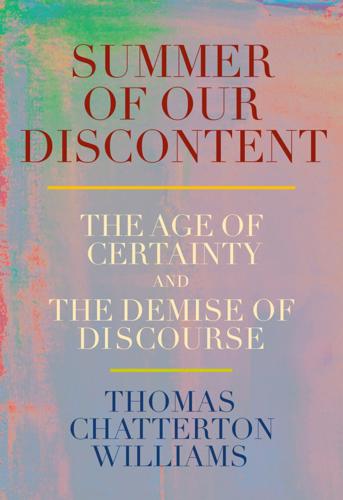
Summer of Our Discontent: The Age of Certainty and the Demise of Discourse
by
Thomas Chatterton Williams
Published 4 Aug 2025
McDermott and Cornell Belcher, “Barack Obama and Americans’ Racial Attitudes: Rallying and Polarization,” Polity 46, no. 3 (July 2014). *4 Inexplicably, Joe Biden joined in, too. *5 It was not, however, the first murder of the social media era: “One of the first and most visible instances of the shift to digital- and social media–based racial justice organizing followed the 2009 murder of Oscar Grant by Bay Area Rapid Transit (BART) police officer Johannes Mehserle. Grant, a twenty-two-year-old Black father on his way home from celebrating New Year’s Eve with friends, was shot in the back by Mehserle in the early morning hours of January 1, 2009, after BART police responded to calls of a fight on the train. Grant had no weapon and was already subdued when Mehserle pulled his service weapon and fired.

Behind the cloud: the untold story of how Salesforce.com went from idea to billion-dollar company--and revolutionized an industry
by
Marc Benioff
and
Carlye Adler
Published 19 Nov 2009
I’ll show you how to build a business that’s not just profitable but inspiring: good for your employees, good for your customers, and good for your community. Perhaps like you, I have always wanted to be an entrepreneur. I grew up watching my father run a chain of women’s clothing stores, and my grandfather, an innovative and unusual attorney, run his own practice and create BART, the San Francisco Bay Area Rapid Transit system. My obsession with software began when I wandered into a computer lab in high school. I would beg my grandmother to drive me to the local RadioShack so I could use the TRS 80 model 1. Later, I used the income I made at my after-school job (cleaning cases at a jewelry store) to buy my own computer.
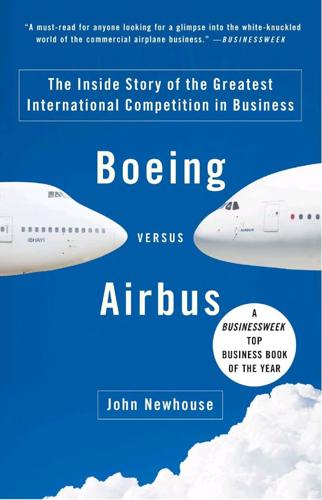
Boeing Versus Airbus: The Inside Story of the Greatest International Competition in Business
by
John Newhouse
Published 16 Jan 2007
The runways at San Francisco are 750 feet apart, not enough to allow two A380’s to take off side by side but enough for one to leave alongside some other airplane. Besides the new terminal, which was opened in December 2000, the airport created two new parking garages, new freeway ramps, and two new employee parking garages. The other up-to-date feature is a light rail system that connects the terminals, garages, rental car offices, and a Bay Area Rapid Transit (BART) station that is located at the entrance of the international terminal. Bus and auto traffic on surface roads has been reduced. John Martin, the airport’s director, sees it as capable of competing with LAX. “Through passengers prefer landing here,” he says. “We have a much higher level of amenities, and are much more efficient.

The Internet Is Not the Answer
by
Andrew Keen
Published 5 Jan 2015
In a month, Tunney had raised $1 million on Kickstarter for a repellent social experiment that brings to mind Soylent Green, the 1974 dystopian movie about a world in which the dominant food product was made of human remains. This libertarian elite doesn’t have much affection for labor unions and the industrial working class, either. When, in 2013, the city’s metro system union, the Bay Area Rapid Transit (BART) workers, went on strike over the threats of automation to their jobs and their relatively low pay in one of America’s most expensive cities, the technology community erupted in a storm of moral outrage. “My solution would be to pay whatever the hell they want, get them back to work, and then go figure out how to automate their jobs,” the CEO of one tech startup wrote on Facebook.60 Indeed, much of the “work” being done by Google-acquired robotic companies like Nest, Boston Dynamics, and DeepMind is focused on figuring out how to automate the jobs of traditional workers such as BART drivers.
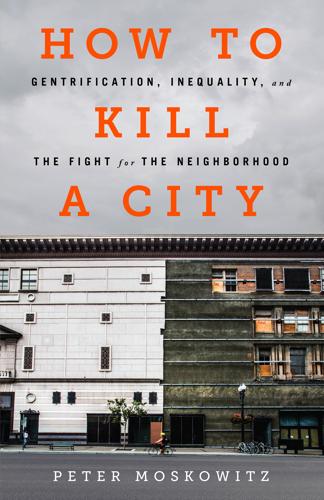
How to Kill a City: The Real Story of Gentrification
by
Peter Moskowitz
Published 7 Mar 2017
Public transit tends to be so bad that an average resident of a low-income suburb who is reliant on public transit can reach only a fraction of the jobs available in that metro region: only 4 percent of jobs are reachable with a forty-five-minute commute on public transportation, and if that commute is extended to ninety minutes, still only 25 percent of a metro area’s jobs are accessible. There are only four commuter lines in the Bay Area. Outside San Francisco, the stops for each are far between and the trains run relatively infrequently. One day, a San Francisco Bay Area Rapid Transit employee tweeted from the company’s official Twitter account that “BART was built to transport far fewer people, and much of our system has reached the end of its useful life.” Another tweet characterized the transit agency as overwhelmed by the tech boom. It was a rare candid moment—an agency essentially admitting there was a problem it could not fix, and no easy way out.
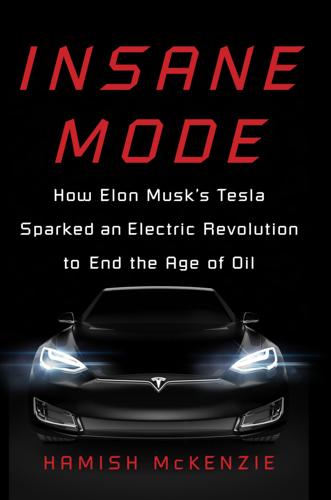
Insane Mode: How Elon Musk's Tesla Sparked an Electric Revolution to End the Age of Oil
by
Hamish McKenzie
Published 30 Sep 2017
After my self-guided tour of Fremont’s industrial wonders, I ate lunch at a packed Thai restaurant downtown. It was opposite a construction site and a sign that read: FREMONT DOWNTOWN ON THE RISE. Fremont was in the midst of transforming itself from commuter suburb to high-tech manufacturing hub. Five miles away, behind the Tesla factory, was the newly built South Fremont station for the Bay Area Rapid Transit trains that crisscross the region. Next to that was South Fremont’s Warm Springs Innovation District, which was in the process of converting 850 acres of land into a housing, shopping, and entertainment hub, with hotels, convention facilities, and parks. The land had previously been zoned for heavy industry.

Frommer's California 2009
by
Matthew Poole
,
Harry Basch
,
Mark Hiss
and
Erika Lenkert
Published 2 Jan 2009
SAN FRANCISCO INTERNATIONAL AIRPORT Almost four dozen major scheduled carriers serve San Francisco International Airport (& 650/821-8211; www.flysfo.com; airport code SFO), 14 miles dir ectly south of do wntown on U.S. 101. Travel time to downtown during commuter rush hour is about 40 minutes; at other times, it’s about 20 to 25 minutes. The cheapest and often fastest way to get fr om SFO to the city is to take BART (Bay Area Rapid Transit; & 415/989-2278; www .bart.gov), which offers numer ous stops within downtown San Francisco. This route, which takes about 35 minutes, avoids traffic on the way and costs a lot less than taxis or shuttles (about $6 each way , depending on exactly where you’re going). Just jump on the airport’s free shuttle bus to the International terminal, enter the BAR T station ther e, and y ou’re on y our way.
…
Bayporter Express (& 877/467-1800 or 415/467-1800; www.bayporter.com) shuttle service is $26 for the first person, $12 for each additional person, to do wntown San Francisco; it costs more to the city’s outlying neighborhoods. Children under 12 ride for $7. The cheapest way to reach downtown San Francisco is to take the shuttle bus from the Oakland Airport to BART (Bay Area Rapid Transit; & 510/464-6000; www.bart.gov). The AirBART shuttle bus runs about every 15 minutes Monday through Saturday from 5am to 12:05am and Sunday from 8am to 12:05am. It makes pickups in front of terminals 1 and 2 near the gr ound transpor tation signs. Tickets must be pur chased at the Oakland Airport’s vending machines prior to boarding.
…
The beautiful, retro, multicolored F-Market streetcar runs from 17th and Castr o streets to B each and Jones streets; every other streetcar continues to Jones and Beach streets in Fisherman’s Wharf. This is a quick and charming way to get up- and do wntown without any hassle. BY BART BART, an acronym for Bay Area Rapid Transit (& 415/989-2278; www. bart.gov), is a futuristic-looking, high-speed rail networ k that connects S an Francisco with the East B ay and the S an Francisco and O akland airpor ts. Four stations ar e on Market Street. Fares range from $1.45 to $7.35, depending on how far you go. Machines in the stations dispense tickets that ar e magnetically encoded with a dollar amount.
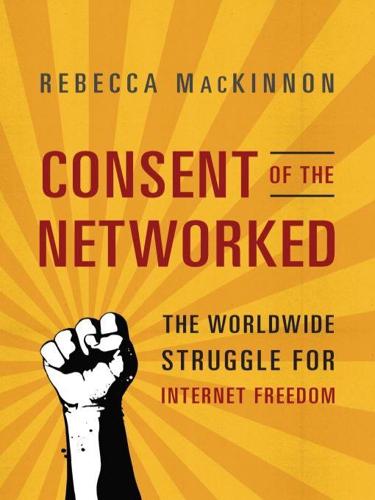
Consent of the Networked: The Worldwide Struggle for Internet Freedom
by
Rebecca MacKinnon
Published 31 Jan 2012
Debates raged in the United Kingdom over Prime Minister David Cameron’s controversial remarks about the need for expanded government power to monitor and restrict the British public’s access to mobile services as well as to social networks. In the United States, San Franciscans were up in arms after the local subway system, Bay Area Rapid Transit (BART), shut down wireless service at several stations to prevent a planned protest against a shooting by BART police of an allegedly knife-wielding man. China’s state-run Xinhua News Agency could not resist the opportunity to gloat: “We may wonder why Western leaders, on the one hand, tend to indiscriminately accuse other nations of monitoring, but on the other take for granted their steps to monitor and control the Internet,” said the unsigned commentary.
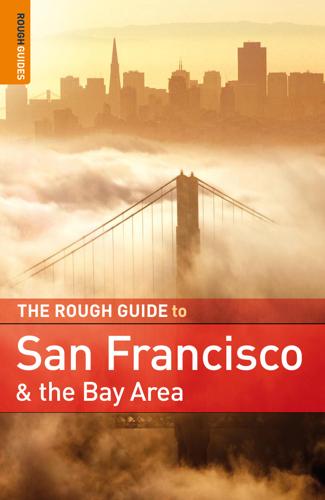
Rough Guide to San Francisco and the Bay Area
by
Nick Edwards
and
Mark Ellwood
Published 2 Jan 2009
Ireland’s premier student travel center, which can also find good nonstudent deals. Virgin Holidays UK t0870/220 2788, wwww .virginholidays.co.uk. Flights, fly-drive deals, tailormade holidays, and packages. Arrival The Bay Area airports are well served by public transport, with a plethora of transit options to get you quickly into San Francisco. Besides BART (Bay Area Rapid Transit), there are plenty of buses, minivans, and cabs, all of which will deliver you into the center of the city in around thirty minutes. Those arriving by bus in San Francisco pull into the center of downtown; if you’re coming on Amtrak, you’ll need to hop onto a shuttle bus from Oakland in the East Bay.
…
For trips to Alcatraz, the newish Alcatraz Cruises (t415/981-7625, w www .alcatrazcruises.com), runs frequently to and from the island during the day from 9am to 1.55pm, departing from Pier 33 just southeast of Fisherman’s Wharf. The last day-tour ferry returns at 4.30pm in winter, 6.30pm in summer; the night-tour ferries leave at 6.10pm and 6.50pm and return at 8.40pm and 9.25pm (day tour $24.50, night tour $31.50). Along Market Street Downtown, MUNI shares station concourses with BART (Bay Area Rapid Transit; t510/465-BART or 415/9892278, wwww.bart.gov), which is the fastest way to get to the East Bay – including downtown Oakland and Berkeley – and south of San Francisco, not to mention the bustling Mission District. Tickets aren’t cheap ($1.50– 6.30 depending on how far you ride), but the service is efficient and very dependable; trains follow four routes on a fixed schedule, usually arriving every ten minutes, although fewer trains run after 8pm, which means transfers and longer waits.
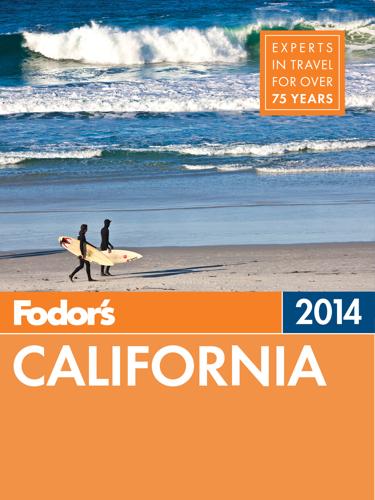
Fodor's California 2014
by
Fodor's
Published 5 Nov 2013
. | 800/660–4287 | www.samtrans.com. South and East Bay Airport Shuttle. | 800/548–4664 | www.southandeastbayairportshuttle.com. SuperShuttle. | 800/258–3826 | www.supershuttle.com. VIP Airport Shuttle. | 408/986–6000, 800/235–8847 | www.viptransportgroup.com. BART Travel BART (Bay Area Rapid Transit) trains, which run until midnight, travel under the bay via tunnel to connect San Francisco with Oakland, Berkeley, and other cities and towns beyond. Within San Francisco, stations are limited to downtown, the Mission, and a couple of outlying neighborhoods. Trains travel frequently from early morning until evening on weekdays.
…
Intracity San Francisco fares are $1.75; intercity fares are $3.15 to $8.50. BART bases its ticket prices on miles traveled and does not offer price breaks by zone. The easy-to-read maps posted in BART stations list fares based on destination, radiating out from your starting point of the current station. Contact Bay Area Rapid Transit (BART). | 415/989-2278 | www.bart.gov. Boat and Ferry Travel Several ferry lines run out of San Francisco. Blue & Gold Fleet operates a number of routes, including service to Sausalito ($11 one-way) and Tiburon ($11 one-way). Tickets are sold at Pier 41 (between Fisherman’s Wharf and Pier 39), where the boats depart.
…
Berkeley is a university town, so the rhythm of the school year might affect your visit. It’s easier to navigate the streets and find parking near the university between semesters, but there’s also less buzz around town. Getting Here and Around BART Travel Using public transportation to reach Berkeley or Oakland is ideal. The under- and aboveground BART (Bay Area Rapid Transit) trains make stops in both towns. Trips to either take about a half hour one-way from the center of San Francisco. Contacts BART. | 510/465–2278 | www.bart.gov. Boat and Ferry Travel For sheer romance, nothing beats the ferry; there’s service from San Francisco to Sausalito and Tiburon in Marin County, and to Alameda and Oakland in the East Bay.

Lonely Planet's Best of USA
by
Lonely Planet
. (%707-935-3000, 888-490-2739; www.benziger.com; 1883 London Ranch Rd, Glen Ellen; tasting $15-40, tours $25-50; h10am-5pm, tram tours 11am-3:30pm; c#) S 8 INFORMATION San Francisco Visitor Information Center (Map; %415-391-2000; www.sanfrancisco.travel; Hallidie Plaza, Market & Powell Sts, lower level; h9am-5pm Mon-Fri, to 3pm Sat & Sun; jPowell-Mason, Powell-Hyde, mPowell St, ZPowell St) Provides multilingual information, sells transportation passes, publishes glossy maps and booklets, and provides interactive touch screens. 8 GETTING THERE & AWAY AIR San Francisco International Airport is 14 miles south of Downtown off Hwy 101, while Oakland International Airport (OAK; www.oaklandairport.com; 1 Airport Dr) is 15 miles east of Downtown. TRAIN Amtrak (%800-872-7245; www.amtrakcalifornia.com) trains stop at Jack London Sq in Oakland, from where Amtrak’s Thruway buses connect with San Francisco. 8 GETTING AROUND TO/FROM THE AIRPORT From a station connected to the SFO international terminal, BART (Bay Area Rapid Transit; www.bart.gov; one way $8.65) is a 30-minute train ride to Downtown. An airport taxi to Downtown costs $40 to $55, plus tip. SuperShuttle (%800-258-3826; www.supershuttle.com) offers shared van rides (per person $17). Oakland International Airport (OAK) is also connected to the city by BART; to get to Downtown, change at Coliseum Station for a San Francisco/Daly City–bound train.

Coastal California
by
Lonely Planet
Both have sleeping cars and dining/lounge cars with panoramic windows. Amtrak runs free shuttle buses to San Francisco’s Ferry Building and CalTrain station. Getting Around For Bay Area transit options, departures and arrivals, check 511 or www.511.org. To/From the Airport BART (Bay Area Rapid Transit; www.bart.gov; one-way $8.10) offers a fast, direct ride to downtown San Francisco. SamTrans (www.samtrans.com; one-way $5) express bus KX gets you to Temporary Transbay Terminal in about 30 minutes. SuperShuttle ( 800-258-3826; www.supershuttle.com; one-way $17) door-to-door vans depart from baggage-claim areas, taking 45 minutes to most SF locations.
…
Some of the cheaper downtown parking garages are Sutter-Stockton Garage ( 415-982-7275; cnr Sutter & Stockton Sts), Ellis-O’Farrell Garage ( 415-986-4800; 123 O’Farrell St) and Fifth & Mission Garage ( 415-982-8522; 833 Mission St), near Yerba Buena Gardens. The parking garage under Portsmouth Sq in Chinatown is reasonably priced for shorter stops; ditto for the St Mary’s Square Garage ( 415-956-8106; California St), under the square, at Grant and Kearny Sts. Daily rates range between $20 and $35. BART Bay Area Rapid Transit (BART; 415-989-2278; www.bart.gov; 4am-midnight Mon-Fri, 6am-midnight Sat, 8am-midnight Sun) is a subway system linking SFO, the Mission District, downtown, San Francisco and the East Bay. The fastest link between Downtown and the Mission District also offers transit to SF airport, Oakland ($3.20) and Berkeley ($3.75).
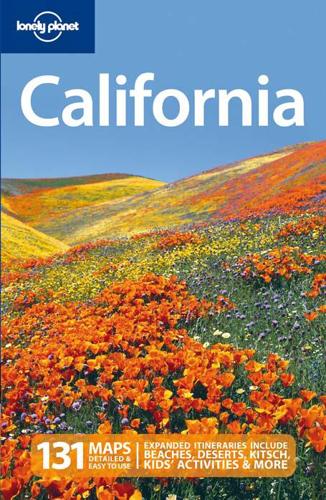
California
by
Sara Benson
Published 15 Oct 2010
MUNI’s N-Judah streetcar line runs to and from the CalTrain station. The nearest Amtrak ( 800-872-7245) terminals are in Emeryville and Oakland (Click here), with bus service to San Francisco’s Ferry Building. Return to beginning of chapter GETTING AROUND To/From the Airport The direct 30-minute Bay Area Rapid Transit (BART; 415-989-2278) train service runs from the airport to downtown San Francisco ($5.15), connecting to Oakland via the AirBART shuttle Click here. The express bus KX ($4, 30 minutes) and slower local bus 292 ($1.50, 50 minutes) run by SamTrans ( 800-660-4287) leave from the SFO BART station and drop you at San Francisco’s Transbay Terminal (see opposite).
…
Some of the cheaper downtown parking garages are Sutter-Stockton Garage (Map; 415-982-7275; cnr Sutter & Stockton Sts), Ellis-O’Farrell Garage (Map; 415-986-4800; 123 O’Farrell St) and Fifth & Mission Garage (Map; 415-982-8522; 833 Mission St), near Yerba Buena Gardens. The parking garage under Portsmouth Sq in Chinatown is reasonably priced for shorter stops; ditto for the St Mary’s Square Garage ( 415-956-8106; California St), under the square, at Grant and Kearny Sts. Daily rates range between $18 and $28. Public Transportation BART The Bay Area Rapid Transit system (BART; 415-989-2278; www.bart.gov; 4am-midnight Mon-Fri, 6am-midnight Sat, 8am-midnight Sun) is a subway system linking SFO, the Mission District, downtown, San Francisco and the East Bay. Downtown, the BART route runs beneath Market St, and it’s a quick 10-minute ride to the Mission District; take any train heading south.
…
Train In LA, the Metro is a combined network of subway and light-rail, and Metrolink commuter trains connect LA with surrounding counties. San Diego operates Coaster commuter trains along the coast between downtown and Oceanside. To get around San Francisco, the East Bay and the Peninsula, take Bay Area Rapid Transit (BART) or Caltrain. The Las Vegas Strip has a monorail. Taxi Taxis are metered, with flag-fall fees of $2.50 to $3.50 to start, plus $2 to $3 per mile; they charge extra for handling baggage and sometimes for airport pick-ups. Drivers expect a 10% to 15% tip, rounded up to the next dollar.
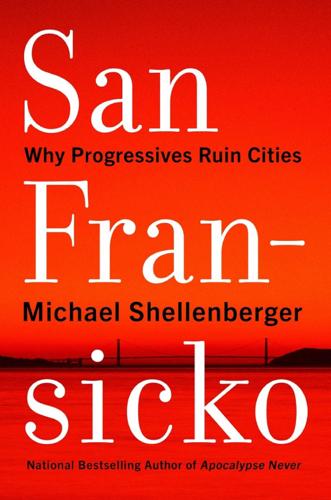
San Fransicko: Why Progressives Ruin Cities
by
Michael Shellenberger
Published 11 Oct 2021
Over the last decades there were many visible signs that homelessness was about much more than poverty and housing. Between 2010 and 2020, the number of calls made to San Francisco’s 311 line complaining of used hypodermic needles on sidewalks, in parks, and elsewhere rose from 224 to 6,275.37 In 2018, footage of dozens of people slumped over in an entrance to a Bay Area Rapid Transit (BART) station, many with needles in their arm, went viral.38 “We call it the heroin freeze,” said one local. “They can stay that way for hours.”39 Said another, “It’s like the land of the living dead.”40 For decades researchers have documented much higher levels of mental illness and substance abuse among the homeless than in the rest of the population.
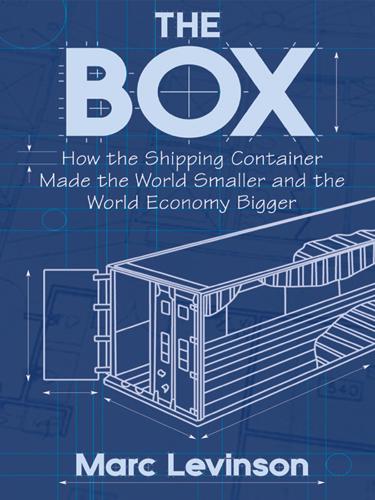
The Box: How the Shipping Container Made the World Smaller and the World Economy Bigger
by
Marc Levinson
Published 1 Jan 2006
The flow of nonmilitary cargo, flat for a decade, rose by one-third between 1962 and 1965.12 Then Oakland raised the bar. The port’s ambitions centered on an area known as the Outer Harbor, bisected by an embankment that had once carried passenger trains to their terminus at a ferry landing. The Port Commission was out of money after expanding the Oakland airport, but the Bay Area Rapid Transit District, which began designing its regional rail system in 1963, came to its rescue. In return for permission to tunnel beneath port property, the rail agency agreed to clear abandoned buildings along the embankment, construct a 9,100-foot dike, and fill the enclosed area with dirt excavated in tunnel construction.

Lean Analytics: Use Data to Build a Better Startup Faster
by
Alistair Croll
and
Benjamin Yoskovitz
Published 1 Mar 2013
A lot of work has gone into understanding how people make choices. “A ‘discrete’ choice,” says Berkeley professor Dan McFadden, “is a ‘yes/no’ decision, or a selection of one alternative from a set of possibilities.” His application of discrete choice modeling to estimate the adoption of San Francisco’s Bay Area Rapid Transit system—which was under construction at the time of his research—earned him the 2000 Nobel Prize in Economics.[149] One important conclusion from this work is that people find it easier to discard something they don’t want than to choose something they do (which feels like commitment), so a series of questions in which they are asked to discard one of two options works well.
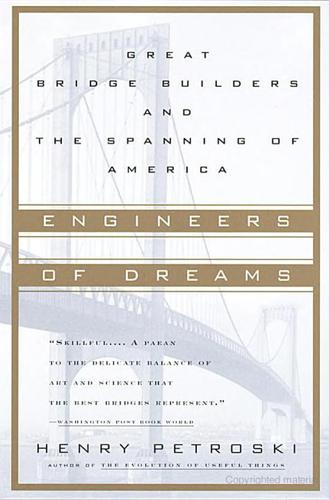
Engineers of Dreams: Great Bridge Builders and the Spanning of America
by
Henry Petroski
Published 2 Jan 1995
It was estimated that about a quarter-million people were crowded onto the Golden Gate at one time, thus testing it as it had never been before. The bridge, which has come to be known among engineers for its flexibility in the wind, for having been stiffened since construction, and for having been found structurally unsuitable to carry an extension of the Bay Area Rapid Transit system into Marin County, had the graceful arc of its center span flattened out under all the people in 1987, and there was some concern for its safety. The Golden Gate Bridge, in its dramatic setting (photo credit 5.16) It is unlikely that the centennial of the bridge will be celebrated with another uncontrolled Pedestrian Day, unless substantial structural retrofitting work is done in the meantime.
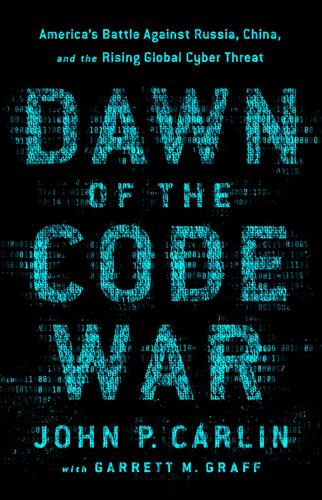
Dawn of the Code War: America's Battle Against Russia, China, and the Rising Global Cyber Threat
by
John P. Carlin
and
Garrett M. Graff
Published 15 Oct 2018
All told, they found 71 victim organizations spread across 14 countries—from economic targets such as the Department of Energy research laboratory and defense contractors to US real estate and accounting firms, as well as targets clearly chosen for their political interest: a major US news organization’s Hong Kong bureau and the ASEAN Secretariat just before the organization’s annual summit in Singapore, the United Nations, the International Olympic Committee, and the World Anti-Doping Agency, as well as companies in South Korea, Vietnam, Taiwan, and other Chinese rivals in Asia.34 The public exposure of Shady Rat was another example for us of the odd bifurcation of cyber headlines. Even as hacktivist groups such as Anonymous and Lulzsec grabbed headlines that year with their attacks on HBGary—a company investigating WikiLeaks—and by hacking the website of the Bay Area Rapid Transit system’s police department after a controversial police shooting there, we continued to be most concerned about the foreign nation-states attacking our systems—threats that were much quieter, longer lasting, and deeply damaging to the core of our economy and national security. The headlines dominating news coverage often seemed flashy attention-grabbing surface-level stunts, even as China and Iran carefully and quietly dug far deeper.
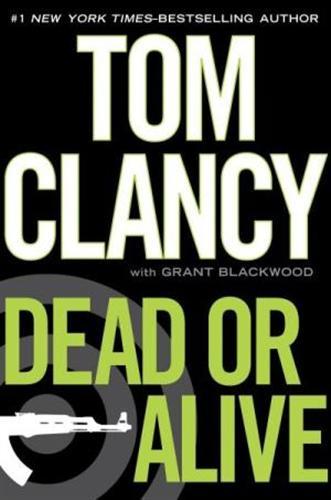
Dead or Alive
by
Tom Clancy
and
Grant (CON) Blackwood
Published 7 Dec 2010
Chavez answered that one. “No. How do the people move, how do they interact? Do they wait for Walk lights, or do they jaywalk? Do they meet one another’s eyes on the sidewalks or exchange pleasantries? How many cop cars do you see? Check for parking. Is it metered or free? Nail down the BART entrances.” “Bay Area Rapid Transit,” Clark added before Jack could ask. “Their subway.” “That’s a lot of shit to absorb.” “That’s the job,” Clark replied. “Wanna go home?” “Not on your life.” “It’s a mind-set, Jack. Change the way you see the landscape. Soldiers look for cover and ambush spots; spooks look for dead drops and surveillance boxes.
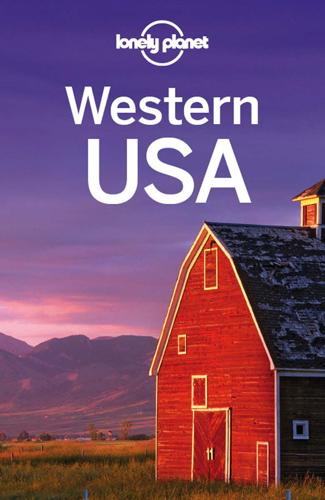
Western USA
by
Lonely Planet
Yelp (www.yelp.com) Locals trade verbal fisticuffs on this San Francisco–based review site that covers shopping, bars, services and restaurants. Getting There & Away Air San Francisco International Airport (SFO; www.flysfo.com) is 14 miles south of downtown off Hwy 101 and accessible by Bay Area Rapid Transit (BART). Bus Until the new terminal is complete in 2017, San Francisco’s intercity hub remains the Temporary Transbay Terminal (Howard & Main Sts), where you can catch buses on AC Transit (www.actransit.org) to the East Bay, Golden Gate Transit (http://goldengatetransit.org) north to Marin and Sonoma Counties, and SamTrans (www.samtrans.com) south to Palo Alto and the Pacific coast.

Nixonland: The Rise of a President and the Fracturing of America
by
Rick Perlstein
Published 1 Jan 2008
The next day was San Francisco. The press was lectured on their plane by John Ehrlichman that McGovern should “repudiate” upcoming demonstrations that police intelligence told them were “political rather than of an antiwar nature.” The president got a tour of the spiffy control center for the new Bay Area Rapid Transit system. It was walled in by glass. The reporters watched from the other side, like gawkers at an aquarium. Then it was off to Los Angeles. Bob Hope warmed up the $1,000-a-plate crowd (“McGovern’s running out of money. Yesterday he mugged an Avon lady!”). The president told of the time he had invited a group of young musicians from Los Angeles to the White House.
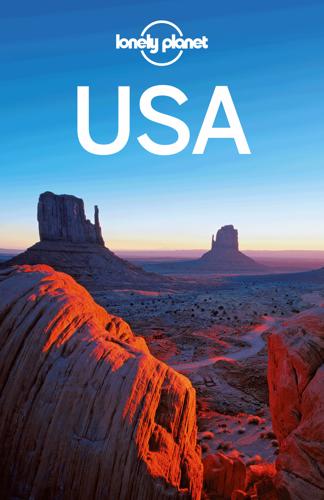
USA Travel Guide
by
Lonely, Planet
Yelp (www.yelp.com) Locals trade verbal fisticuffs on this San Francisco–based review site that covers shopping, bars, services and restaurants. Getting There & Away Air San Francisco International Airport (SFO; www.flysfo.com) is 14 miles south of downtown off Hwy 101 and accessible by Bay Area Rapid Transit (BART). Bus Until the new terminal is complete in 2017, San Francisco’s intercity hub remains the Temporary Transbay Terminal (Howard & Main Sts) , where you can catch buses on AC Transit (www.actransit.org) to the East Bay, Golden Gate Transit (http://goldengatetransit.org) north to Marin and Sonoma Counties, and SamTrans (www.samtrans.com) south to Palo Alto and the Pacific coast.